How I Outranked Amazon with a Brand New Ecommerce Site [SEO Case Study]


Is it difficult to rank a brand new website? It all depends on the niche, you may say.
In this case study, you will learn how Peeyush Dubey and his SEO team worked on a completely new website in the competitive health and wellness niche and achieved impressive search visibility within only 10 months.
About the author

Peeyush Dubey is a Digital Marketing Specialist with over 10 years' experience. Although Peeyush studied Engineering in the Biomedical niche, he found the world of search marketing so interesting that he decided to make a big career change.
By now, he's worked for some of the top SEO companies, managing projects for both small businesses and large corporations.
Presently he's working on several medical and health niche SEO campaigns with Pixl Graphx Inc. , a digital agency based in New Jersey, USA.
About the project
The project I'll cover in this case study belongs to the health and wellness niche, or, to be more specific, it deals with natural health supplements. The company is well known and established in Canada, and this particular project is its new ecommerce venture that targets the B2C market.
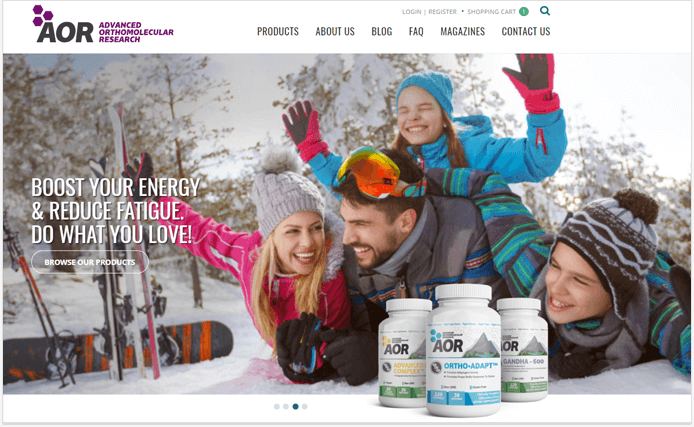
I've been involved in this project since the ideation, but the ‘active' stage of the SEO campaign started about a year ago, in May'18.
The biggest achievement? Our team's been able to build up organic traffic for a brand new website within a short time, even though I consider this niche pretty competitive. We've also managed to increase the conversion rate by over 50%.
Project goals & challenges
The company operates in Canada with aor.ca domain, and initially, we considered keeping one single web asset and keep a folder structure to target different countries (Canada and the USA) which I found to be a better approach. However, the team faced some challenges related to ERP, data, branding and marketing management, so we decided to go ahead with two different websites.
The main KPI for the first year of this SEO campaign was to get the brand keywords in the top 5 positions and non-branded keywords in the top 10 positions.
I think the biggest challenge was to bring a freshly built website to the top and compete with the sites of the leading natural health supplement providers (aggregators) which are already established and ranking well over the last 5 years.
Below, you'll find an overview of the main SEO activities we've undertaken for this project.
Website audit
My SEO team carried out a detailed technical and SEO audit and eliminated the elements that were not search-engine-friendly; there was a lot of clutter on the server that was being indexed.
As you know, ecommerce URL slugs can get really messy, that's why we've changed the URL structure and made it SEO-friendly.
This is how the URLs looked before fixing:
https://aor.us/click.php?c>'dmjdlgsbve>2'lfzxpset?'sbol>2'f>'vsm>iuuq;00xxx
And that's how they look now:
https://aor.us/products/magnesium-potassium-aspartates
The site audit report in WebSite Auditor helped us identify things that needed to be fixed in the first place.
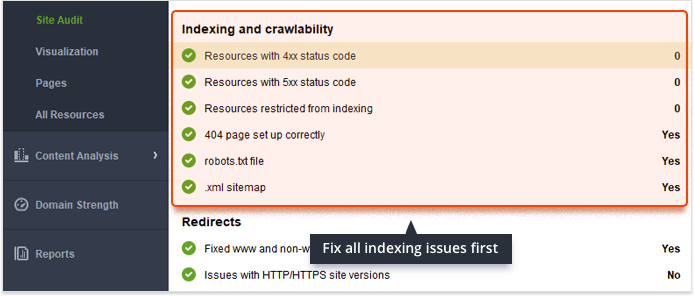
As you know, ecommerce websites have many forms which collect personal details from users. That's why it's important to make sure that all information is encrypted (not just credit card details). So, we migrated to HTTPS at the very beginning of our campaign.
When most indexing and crawlability issues had been fixed, it was time to analyze and optimize the site structure.
With the help of AOR's team, we compiled a list of all necessary product categories and made sure that all important pages were linked (and were not more than 3 clicks away from the homepage).
To find the site's orphan pages, we ran a check using the advanced crawler settings:

If you need to optimize the site structure of an ecommerce website, keep in mind the following:
- Site's homepage must link to all your main category pages and potentially even some of your best product pages as well.
- Good navigation and internal linking ensure that those pages get the most authority from your homepage, and thus have a better chance of ranking high in search. During the audit, I found there were good internal linking opportunities within website pages, especially within the blog. One by one, I evaluated those opportunities and added links that would be great for users and search engines.
Redirects and canonical tags were used to get rid of the duplicate content issues.
As speed score is a ranking factor, the team also worked on optimizing site's performance and managed to achieve a decent result:

As we were working on the .us version of the original .ca website, it was also vital to apply hreflang attributes to the site's pages.
Pro tip: Create and audit hreflang implementation for multi-language projects.
Managing a multi-language website requires the use of hreflang attributes. In WebSite Auditor, you can use two methods to generate hreflang tags:
- HTML tagging — best for sites with a small number of languages/countries versions.
- XML sitemap — best for sites with many languages/countries versions. Specifying the code for all such versions in HTML leads to extra lines of code and increases the page loading time. Plus, it's much easier to edit hreflangs in the sitemap than edit all the pages.
Keyword research
When I start working on a new project, I usually send an SEO questionnaire to the client to understand more about their business, services, solutions, and the audience they want to target.
Then, based on the feedback and using a bit of brainstorming, I research, analyze, and determine the core keywords for the business.
Generally, my keyword research routine can be described with these 7 steps:
- Running a comprehensive analysis of the client's website, their business, and the industry.
- Understanding the priority products/services/solutions (and possibly naming variations, synonyms).
- Setting up a rough list of keywords.
- Evaluating keyword rankings feasibility. Marking highly competitive keywords (if any), which can take a longer time to rank (so the client knows about it).
- Understanding major competitors and the keywords they're using.
- Getting more keyword ideas using various keyword research tools (SEO PowerSuite/Google keyword planner).
- Grouping the keywords into their best possible categories.
With this particular project, I had an initial list of keywords that included all product names and worked on it in the following way. First off, I divided all the keywords into three main categories:
- core
- category (sleep, joints, detoxification, etc.)
- product (ortho sleep, probiotic 3, etc.)
Then, these three main categories were further divided into the following:
- buyer
- non-buyer
- brand
- non-brand
Finally, I added combinations along with long-tail keywords to target information seekers (so we could convert them into buyers):
For example:
- buyer + brand
- buyer + non-brand
- non-buyer + brand
- non-buyer + non-brand
To build a list of combinations, I used Rank Tracker's Keyword Combinations tool that lets you specify what kind of phrases you want to mix.
Here's a draft of the keyword map based on my research and findings:
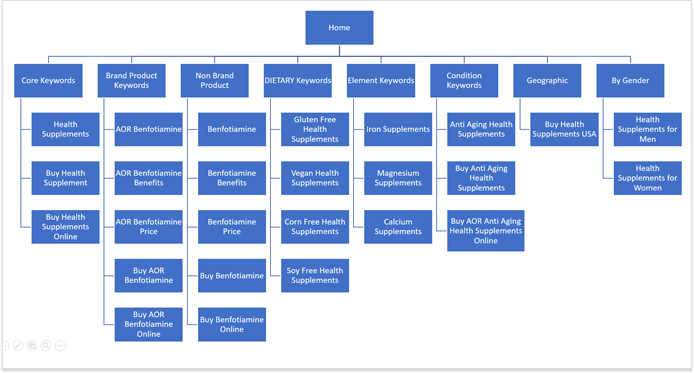
Organizing keywords helps a lot — the rankings may fluctuate frequently, but it gives me the freedom to see if the impact's been sitewide or any particular keyword category has been hit. And then I can plan further optimization accordingly.
Additionally, the proper organization of keywords helps you evaluate which category/sub-category of keywords has higher search volumes and which brings more traffic/conversions.
Pro tip: Use Rank Tracker's Ranking Keywords tool to look for keyword ideas.
You can kick-start your keyword research by looking at the keywords your site's already ranking for. To check these keywords, create or open a project in Rank Tracker, go to Keyword Research > Ranking Keywords, and type in the site's URL. Click Search and within a minute you'll get a list of search terms, together with the Search Volume and Keyword Difficulty stats:
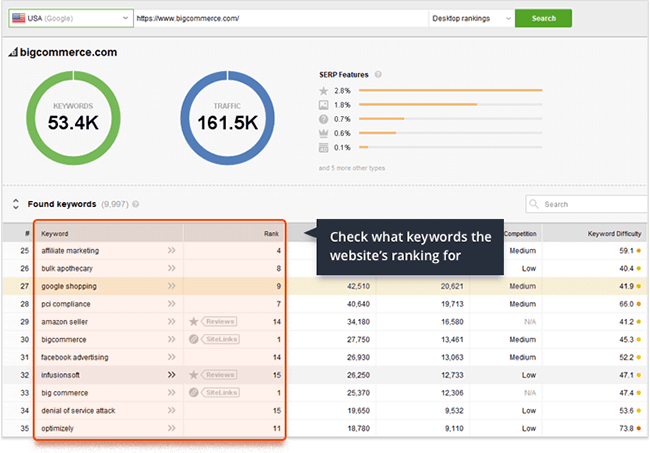
In addition, you can click on the list icon to view the top 10 ranking results and check what type of pages are ranking there:
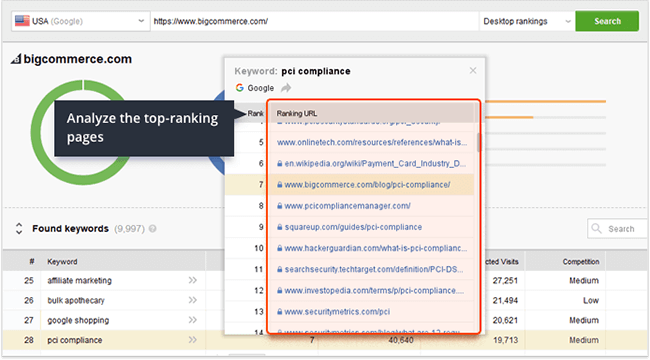
Did you spot any product or category pages? Or is the list occupied by blog posts?
It's important to focus on keywords with the right search intent. If you see tons of blog posts ranking in the top 10 results, there's no point trying to rank a product or category page there. That isn't what people want, so it probably won't work.
Competition analysis
I've invested a lot of time in competition analysis because when you have a new website without backlinks/authority/content, it's quite challenging to push your way into the top results.
| Site Indicators | AOR.us | naturemade.com | puritan.com | vitacost.com | gnc.com |
|---|---|---|---|---|---|
| Google Index Pages | 1 | 447 | 8330 | 59800 | 44300 |
| Google Links | 1 | 33700 | 115000 | 180000 | 171000 |
In the first phase of SEO, our objective was to compete with the big ecommerce brands for the product keywords (brand, non-brand, buyer and non-buyer variations), and I'm glad to admit that this has been successfully achieved.
WebSite Auditor's page audit tool helped me see how well the competitors' top category and product pages were optimized for the target keywords and create an optimization plan based on this data.
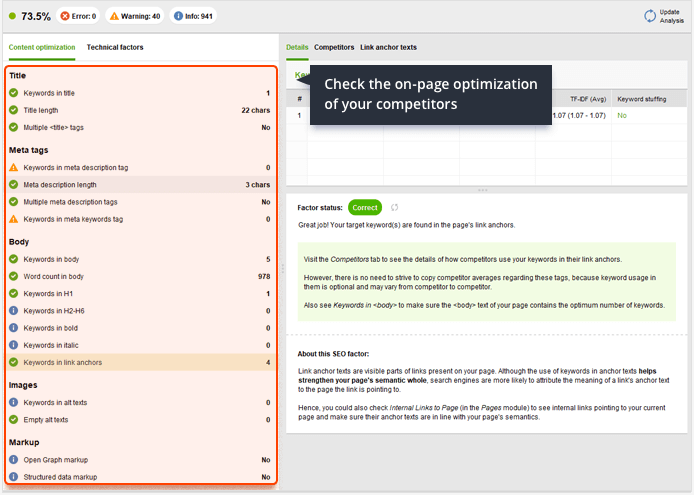
For instance, I could quickly see if they were using structured data and the average word count for body content. I strongly recommend looking for such on-page and content gaps within the top pages of your competitors and use this data to your advantage!
Now we've already started working on competing with big ecommerce brands for our core category keywords and the website's outranking Amazon, iHerb, and Walmart pages for hundreds of relevant queries.
Content optimization
When you optimize an ecommerce website, you may need to work on millions of pages. I suggest you should focus on the low-hanging fruit at the beginning of your campaign and start optimizing the most important pages first.
As I've already mentioned, this client already had another website that had been generating traffic and revenue, so I looked at its stats and checked the top-revenue landing pages.
If you have ecommerce tracking set up in the Google Analytics account, you can discover the most important pages by going to:
Behavior > Site Content > Landing Pages > sort by revenue (high to low) and add the ‘Organic traffic' segment:
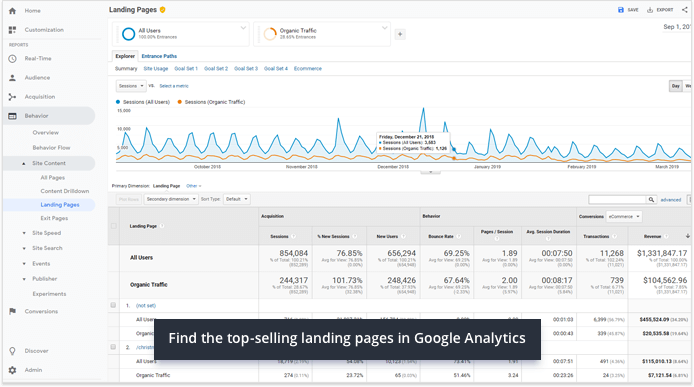
These are the low-hanging fruit pages you should start analyzing in the first place.
Our on-page optimization strategy covers three types of content:
- On-page SEO for the category pages.
- On-page SEO for the product pages.
- On-page SEO for the blog content.
While working on each of this page types, the team made sure to optimize:
- Page URLs
- Page title and description tags
- Page h1 tags
- Page body
- Image alt text
- Internal link anchor text
- Schema markup
The content analysis tool helped quickly identify what needed to be fixed and improved on the site's pages:
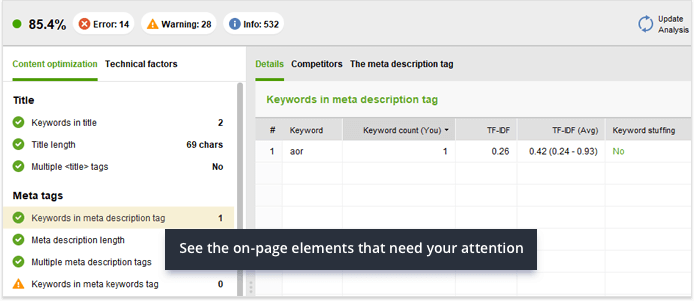
Optimizing so many pages surely takes a lot of time, but it definitely pays off in the long run!
To target the long-tail informational search terms, we've added a few dozen blog posts to the website:
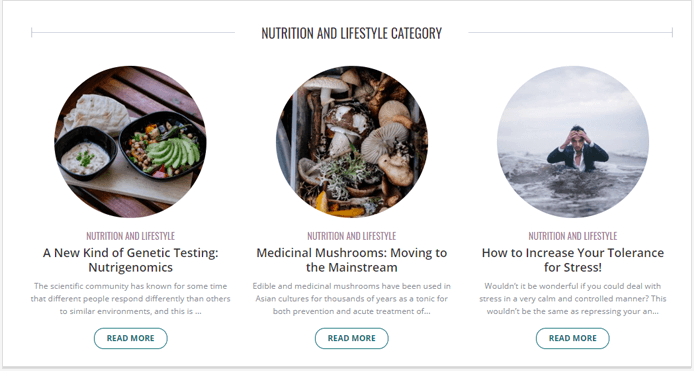
This content keeps bringing relevant organic traffic and can be used in link building campaigns as well.
Backlink analysis and link building
As you know, the two things Google cares so much about when assessing websites are content and backlinks.
We had no backlinks at the beginning of this campaign, and, to make things even more complicated, we had to compete with established websites.
So, we simply started off link building by looking at the competitors' backlink profiles in SEO SpyGlass. The tool found a huge list of dofollow backlinks and the work was humming!
This is the overall backlinks progress for the website:
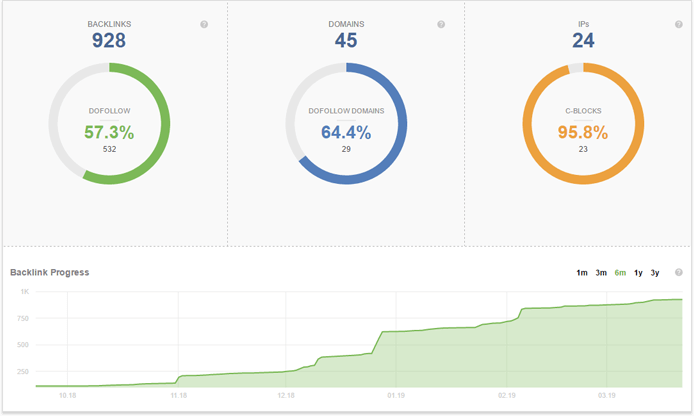
In addition to the links earned through competitor research, the team's been building links by using ebooks, presentations, PDFs, images, video, and audio content.
Here are a few cheap link-building tips for those working on similar projects:
- Use the link intersection tool to see which websites link to multiple competitors, but don't link to your site. Reach out to them and ask for a backlink.
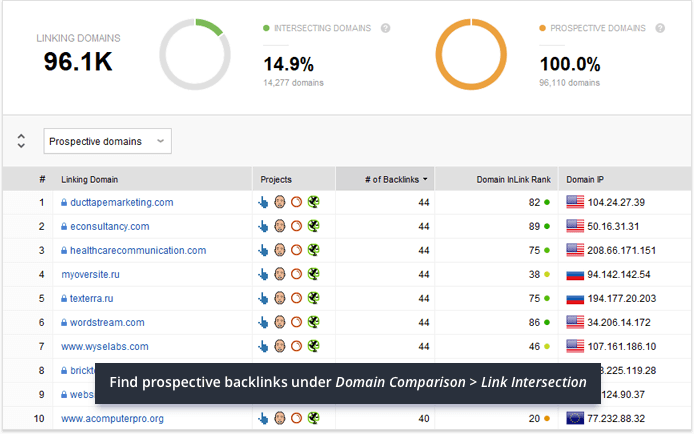
- Search for easily replicable sources of links, such as links from forums, link pages, and niche directories.
- If a website is a reseller, try to get a link on "where to buy" pages on the manufacturer's website.
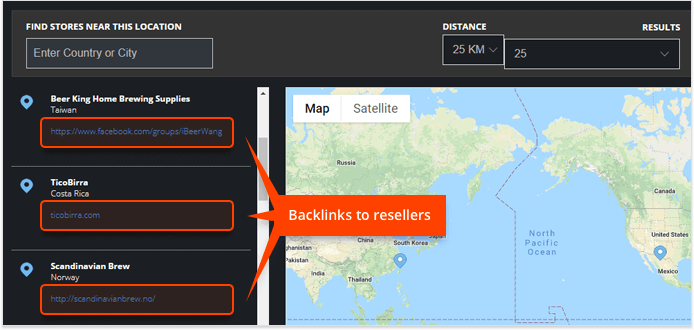
- You can try to partner with niche-relevant businesses. For instance, if your website sells health supplements, you can get links from health/fitness websites that are not your direct competitors.
- Partner with influencers. This definitely takes time and effort because you need to build good relationships (or spend a fortune!) in order to get your product featured in their social media post or blog article.
Project results
Short-term: Increased rankings and traffic
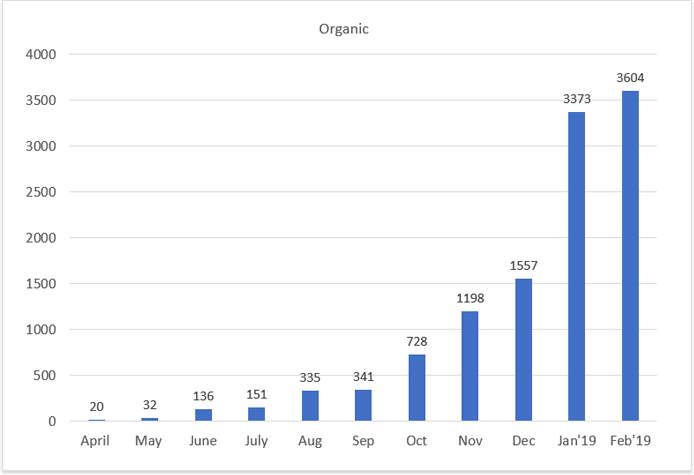
Long-term: Sales growth with an increased per cart value
The improvement in the keyword rankings is impressive! It surely demonstrates the value of the entire SEO campaign:
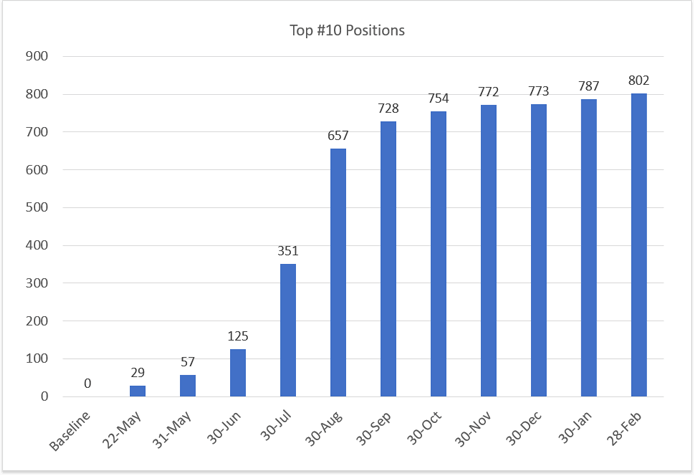
Planned activities
Currently, I'm planning to:
- Do regular on-page optimization (to keep in sync with Google ranking fluctuations due to competitors' activities and the nature of Google's constantly changing algorithms).
- Carry out a technical evaluation of the site on a regular basis and fix any issues found.
- Keep up with the consistent link building (to naturally grow website's link profile that will help improve site's rankings and increase traffic).
- Create new content to target more long-tail keywords.
- Submit AOR's product feed to Google Shopping.
Did you have experience with similar health niche projects? Or maybe you'd like to ask Peeyush some questions related to his SEO campaign? Feel free to share your opinion in the comments below!

By: Peeyush Dubey







